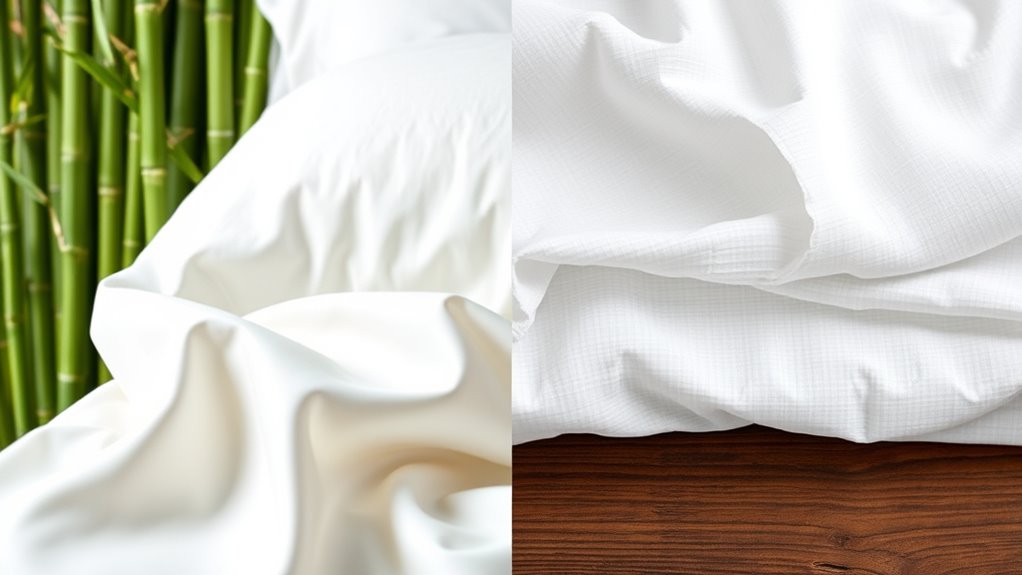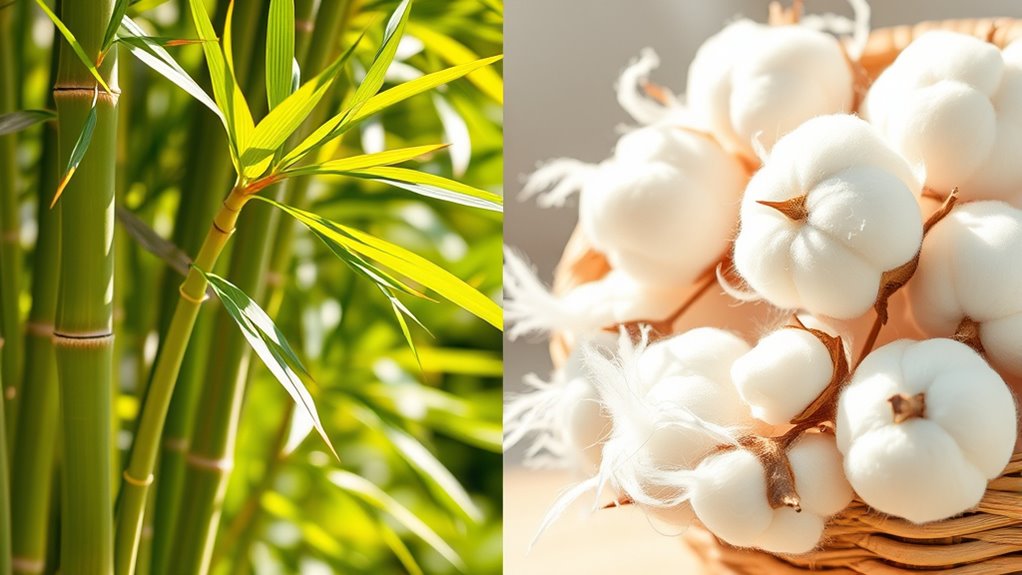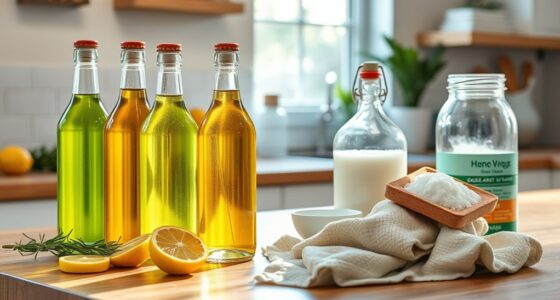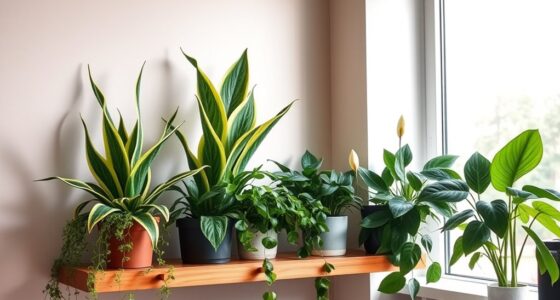When comparing bamboo and cotton sheets, you’ll find bamboo tends to be more durable, resisting pilling and wear over time, making it a cost-effective choice. It’s also more eco-friendly due to faster growth and lower resource use. Cotton, especially high-quality varieties, can last long but often requires more maintenance. Understanding these differences helps you spot the true value and long-term costs. Keep exploring to see how each material matches your needs.
Key Takeaways
- Bamboo sheets generally have a higher initial cost but last longer due to superior durability and resistance to wear and tear.
- High-quality cotton sheets can be more expensive upfront but may require replacement sooner if lower quality.
- Bamboo’s eco-friendly growth reduces environmental impact and resource costs, offering long-term savings.
- Proper maintenance is essential for both materials to maximize lifespan and cost-effectiveness.
- Overall, bamboo sheets often provide better value over time due to durability and sustainability benefits.

Durability is another critical aspect to examine. When comparing the durability of bamboo versus cotton sheets, you notice that bamboo tends to hold up well over time. Its fibers are naturally strong and resistant to pilling, maintaining their softness and integrity even after multiple washes. This resilience means bamboo sheets often last longer, making them a cost-effective choice in the long run. Cotton sheets, especially those made from lower-quality fibers, can fray, pill, or develop thinning areas over time. However, high-quality cotton like Egyptian or Pima tends to be more durable, though they usually come with a higher price tag. The durability comparison shows that while both materials can be long-lasting if well-made, bamboo sheets have an edge when it comes to resisting wear and tear without sacrificing comfort. Additionally, bamboo’s fast-growing nature and minimal resource requirements make it a more sustainable choice that aligns with eco-conscious values.
Ultimately, your decision might hinge on your priorities. If environmental impact and durability are at the top of your list, bamboo sheets offer a compelling combination of sustainability and longevity. They’re crafted with a focus on eco-friendliness and tend to withstand the test of time better than many cotton options. Cotton sheets, especially premium varieties, can also be durable but often require more resources to produce and maintain. Understanding these differences helps you make an informed choice that aligns with your values and lifestyle, ensuring you select bedding that’s not only comfortable but also responsible and durable.
Frequently Asked Questions
Which Material Is More Eco-Friendly to Produce?
When comparing materials for eco-friendliness, you should consider sustainability metrics and environmental impact. Bamboo typically scores higher because it grows quickly without needing much water or pesticides, reducing its environmental footprint. Cotton, especially conventional, consumes more water and chemicals, making it less sustainable. So, if you’re aiming for a greener choice, bamboo generally has a lower environmental impact and better sustainability metrics than traditional cotton.
How Do Bamboo and Cotton Sheets Compare in Durability?
You might think sheets last forever, but the truth is, durability varies wildly. Bamboo sheets often outshine cotton with better fabric softness and breathability, making them more resilient over time. While cotton can soften with each wash, bamboo maintains its strength longer, resisting wear and tear. So, if you’re after longevity and comfort, bamboo sheets are your best bet—they truly stand the test of time.
Are There Allergy Concerns With Bamboo or Cotton Sheets?
You might wonder if bamboo or cotton sheets cause allergy concerns. Generally, both materials have low allergenic response, making them safe for most sleepers. However, cotton sheets with chemical finishes or dyes could trigger irritant potential in sensitive individuals. Bamboo sheets, especially if processed naturally, tend to be hypoallergenic, reducing the risk of allergic reactions. Always choose organic or chemical-free options if you’re concerned about irritants.
What Is the Typical Lifespan of Each Type?
Think of your sheets as the foundation of nightly comfort, lasting through seasons like loyal friends. Cotton sheets typically last around 1-2 years with regular use, while bamboo sheets can endure 3-5 years due to their durability. Both fabrics influence environmental impact and fabric sustainability, but bamboo’s longer lifespan diminishes waste. Choosing durable sheets helps reduce your environmental footprint and ensures cozy nights for years to come.
Do Bamboo Sheets Require Special Care or Cleaning?
Bamboo sheets do require special care to stay soft and durable. Follow the care instructions on your label, usually washing in cold water on a gentle cycle. Use mild detergent and avoid bleach, which can damage the fibers. For best cleaning tips, line dry or tumble dry on low heat. Proper care helps maintain the quality of your bamboo sheets, ensuring they stay comfy and last longer.
Conclusion
So, as you decide between bamboo and cotton sheets, consider the cost, comfort, and care. Bamboo brings beauty, breathability, and a touch of sustainability, while cotton offers classic comfort and durability. Your choice impacts more than just your bed — it influences the environment and your budget. By weighing these worries wisely, you’ll sleep soundly knowing you’re making a mindful, meaningful move. Make your mattress matter with a mindful, motivated decision today!









